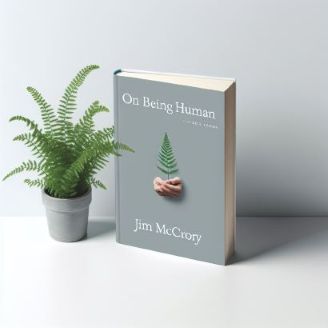
Nothing eventful happened on April 2, 1956—except that I was born. My mother passed me on to another family just a few weeks later. So, I was adopted. And so, sometime that April, I found myself in a makeshift cradle, a drawer with four people staring down at me. Two older girls and a middle-aged couple who would become my new family, for reasons I still don’t fully understand.
My new home was a tenement in Govan, overshadowed by the towering shipyards that dominated the skyline. From our third-story window came the sounds of riveters, the pounding of angry hammers, and the erratic sizzle of torches flaring like fireworks as they sculpted metal into majestic vessels. The reasons for my arrival in that household remain a mystery, obscured by time and tangled threads of secrecy.
Govan, in those days, was a claustrophobic maze of crumbling tenements. The buildings leaned close, conspiring to shut out the light, leaving the streets as drab and shadowed as sepia-toned photographs from the Victorian era. In narrow side streets, stray dogs roamed freely while vermin scurried in the darkness, always foraging for scraps. Life there was governed by the harsh economics of survival, a place where razor gangs, loan sharks, and corner pubs shaped the rhythm of daily existence. Ambition struggled to breathe in that stifling atmosphere, and every corner whispered of escape, of a better life elsewhere.
Decades later, during a routine dental visit, I came across Avril Paton’s painting Windows to the West. It struck a deep chord, transporting me back to a winter’s day in my ninth year. Full of youthful curiosity, I had crossed the Clyde with friends, eager to explore Kelvin’s Museum. But as boys do, we wandered off track and into an old, condemned tenement.
Lost in the adventure, we meandered through Glasgow’s West End until dusk crept in, catching us unawares on Saltoun Street—the very one Paton captured in her painting. Though her inspiration came from a blizzard in 1993, her depiction mirrored my own memory. I peered into warmly lit windows and saw families gathering for meals, decorating for Christmas. Two old men, mirror images of each other, dozed beneath their moustaches. The scene stirred something in me—a longing, a recognition of something missing in my own life.
If I could name what was absent in my early years, it was a sense of home—stability, warmth, belonging. Paton’s image of Saltoun Street, transformed by snow, became a metaphor for my own fleeting joys and the elusive permanence I had yearned for since childhood. As the snowflakes in her painting settled, so too did my thoughts, revealing a life woven from threads of adventure, displacement, and an enduring search for a place to truly call home. A weight I have carried all my life.
Image generated with the assistance of Microsoft Copilot